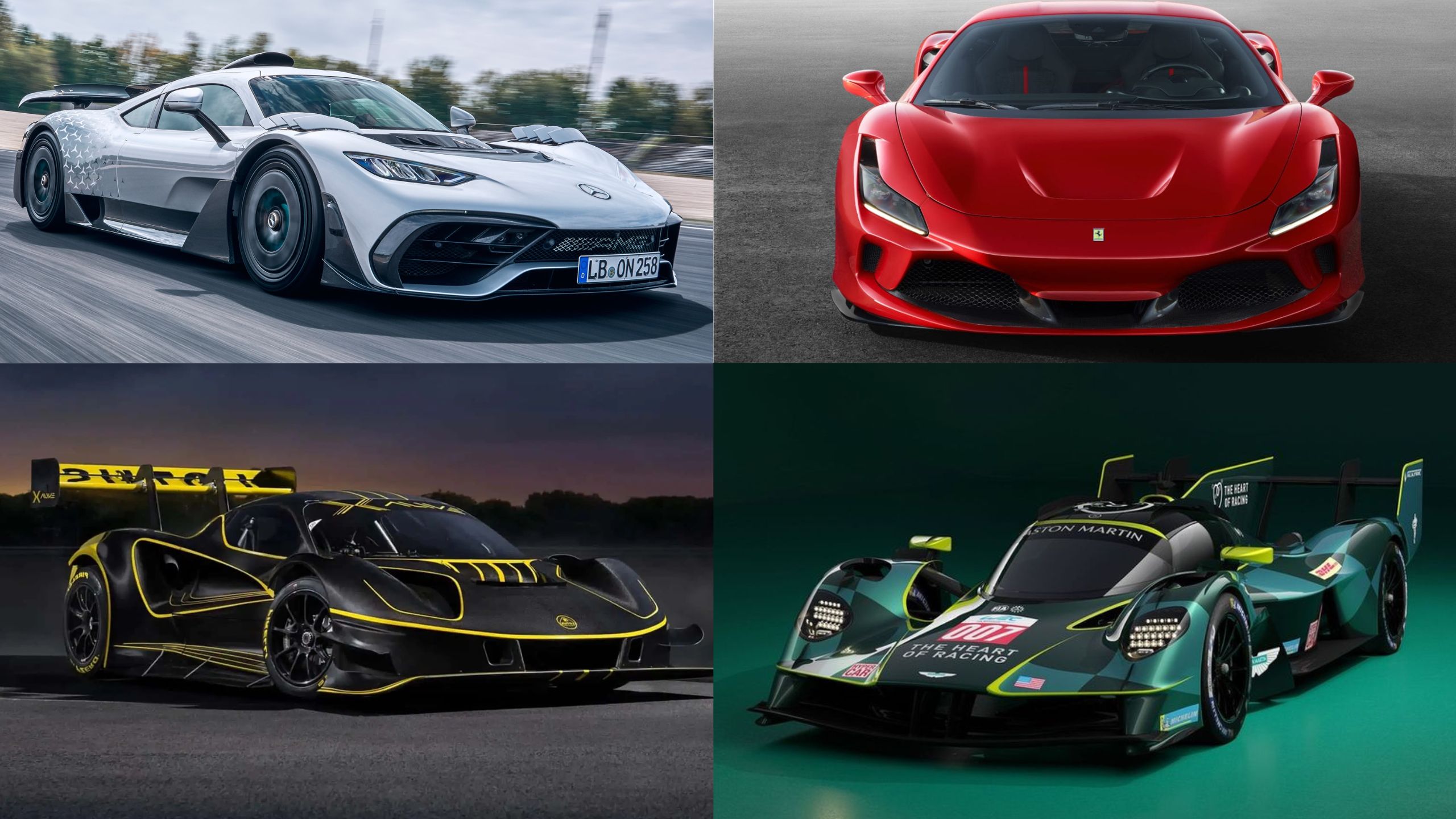The relationship between Formula 1 racing and production vehicles represents one of the most exciting intersections in automotive engineering.
For decades, manufacturers involved in the pinnacle of motorsport have sought to transfer racing technology, aerodynamic principles, and performance philosophy from the track to the street.
These Formula 1-inspired road cars serve as technological showcases, demonstrating how competition at the highest level drives innovation that eventually benefits everyday drivers.
From the screaming naturally aspirated engines reminiscent of F1’s golden era to the hybrid powertrains that mirror modern racing technology, these vehicles embody the spirit of Formula 1 in road-legal form.
While some are direct collaborations with F1 teams or drivers, others incorporate specific technologies or design elements pioneered on the racetrack.
The connection varies in strength from cars with genuine F1-derived engines to those that simply capture the essence of Grand Prix racing in their character and performance.
For enthusiasts seeking the closest experience to piloting an F1 car on public roads, these machines offer a tantalizing look into the high-downforce, high-revving, precision-engineered performance.
Each represents a different interpretation of the Formula 1 ethos, translated through the lens of road car practicality and regulations.
Let’s explore these remarkable vehicles that bring the excitement and innovation of Formula 1 within reach of those fortunate enough to own them.
1. Mercedes-AMG ONE
The Mercedes-AMG ONE represents perhaps the most direct translation of modern Formula 1 technology to a road-legal vehicle ever attempted.
At its heart beats a powertrain that isn’t merely inspired by F1 technology it fundamentally is an F1 powertrain adapted for street use.
The car features a 1.6-liter turbocharged V6 hybrid engine derived directly from the Mercedes-AMG Petronas Formula 1 team’s championship-winning cars, capable of revving to an astonishing 11,000 rpm.
This mid-mounted internal combustion engine works in concert with four electric motors one integrated with the turbocharger, one attached to the combustion engine, and two driving the front wheels to produce a combined output exceeding 1,000 horsepower.
The result is a performance that approaches actual F1 capabilities, with a 0-60 mph time of under 2.9 seconds and a top speed exceeding 217 mph.
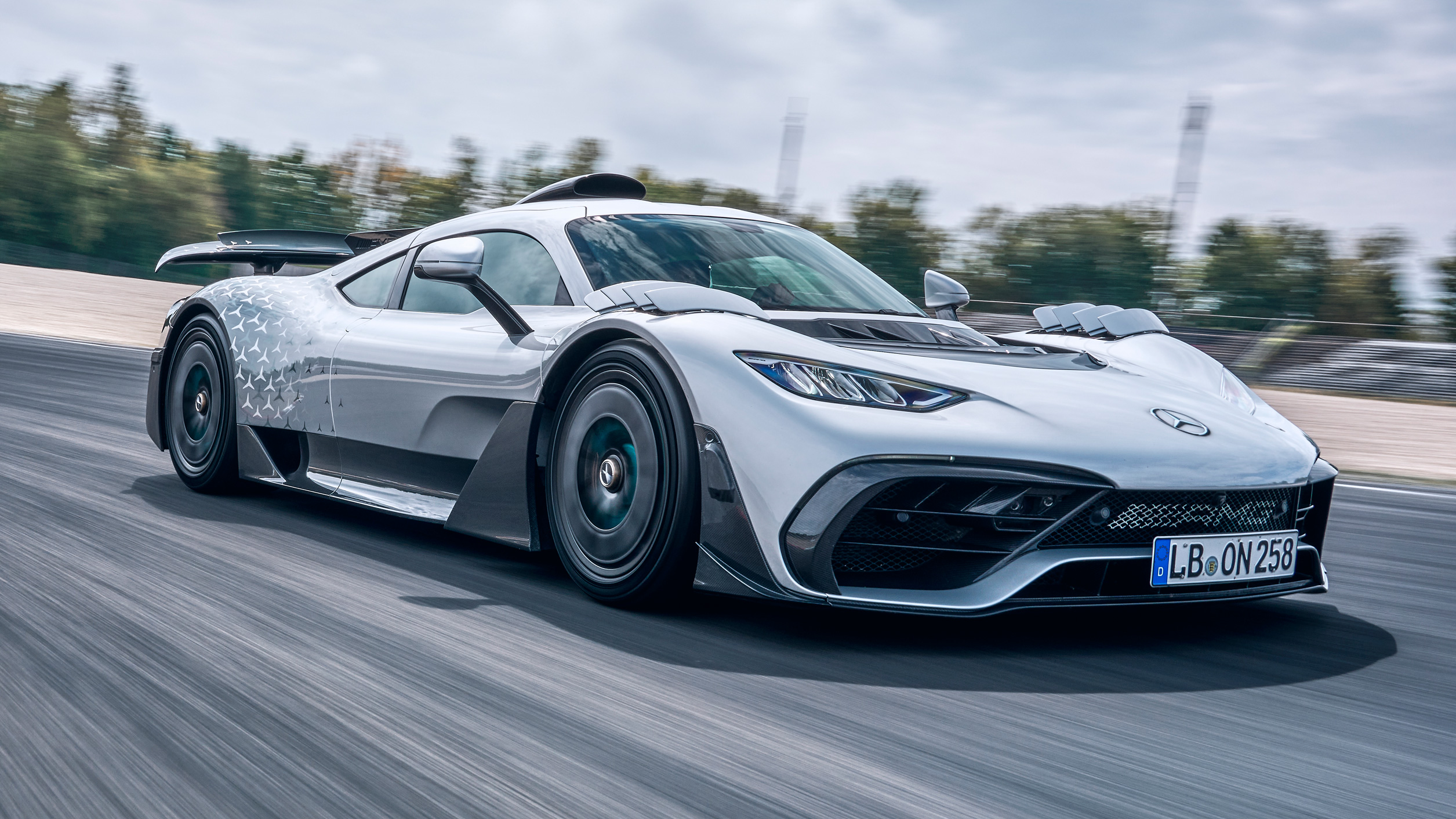
The hybrid technology mirrors Mercedes’ F1 power unit, including energy recovery systems that harvest power under braking.
The ONE’s carbon fiber monocoque chassis and body panels keep weight to a minimum while providing exceptional structural rigidity.
The aerodynamic package generates genuine downforce with an active rear wing, underbody diffuser, and carefully sculpted bodywork developed using computational fluid dynamics and wind tunnel testing the same methods employed in F1 car development.
The pushrod suspension system with adjustable coilovers further emphasizes the F1 connection.
The interior continues the racing theme with a Formula 1-style steering wheel featuring integrated controls and shift lights, carbon fiber bucket seats, and minimalist design focused on driver engagement.
Despite its track-focused nature, the ONE includes air conditioning, power windows, and a digital infotainment display concessions to road usability that an actual F1 car doesn’t require.
Manufacturing complexity and the challenges of adapting a thoroughbred racing engine for road use delayed the project significantly, but when deliveries finally began, the ONE secured its place in automotive history as the closest thing to an F1 car with license plates.
With just 275 units produced, each priced at approximately $2.7 million, this hypercar represents the absolute pinnacle of F1 technology transfer to the road.
2. Ferrari SF90 Stradale
The Ferrari SF90 Stradale draws its name and inspiration directly from Ferrari’s Formula 1 program “SF90” which references Scuderia Ferrari’s 90th anniversary race car.
While not containing actual F1 components like the Mercedes-AMG ONE, the SF90 Stradale incorporates numerous technologies and design philosophies honed through Ferrari’s extensive Grand Prix racing experience.
At the heart of the SF90 lies a hybrid powertrain that conceptually mirrors the energy recovery principles employed in modern Formula 1.
A twin-turbocharged 4.0-liter V8 engine producing 769 horsepower works in conjunction with three electric motors two on the front axle and one between the engine and the eight-speed dual-clutch transmission adding another 217 horsepower for a combined system output of 986 horsepower.
The car’s aerodynamic development borrowed heavily from Ferrari’s F1 expertise, with particular attention paid to managing airflow around and through the vehicle.
The “shut-off Gurney” a movable section of the rear spoiler that adjusts automatically based on driving conditions demonstrates the kind of active aerodynamics pioneered in racing.
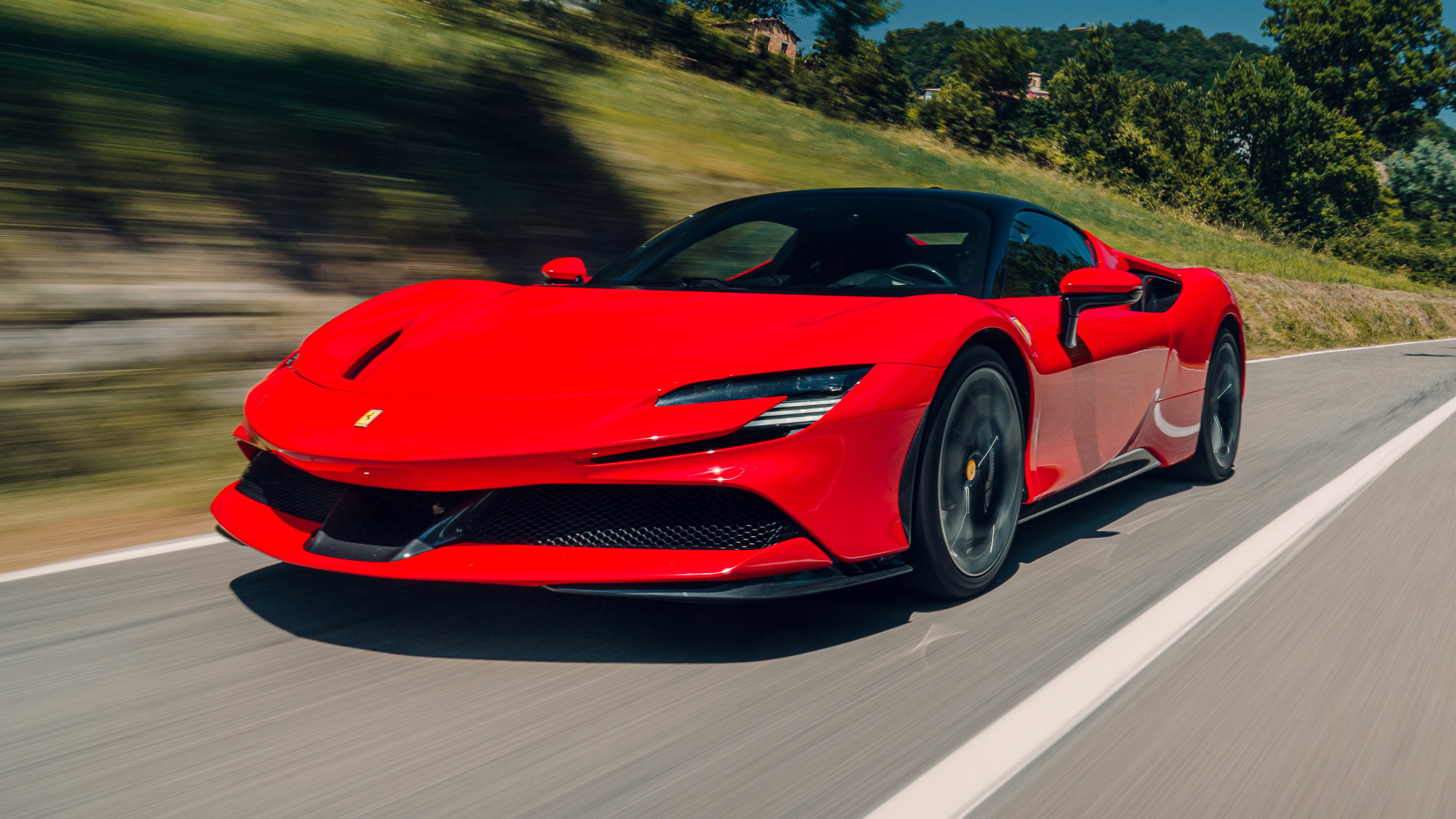
The SF90 generates 390 kg of downforce at 155 mph, helping it achieve extraordinary cornering capabilities.
Ferrari’s Formula 1 influence extends to the vehicle’s control systems as well. The sophisticated electronic architecture manages the hybrid system, torque vectoring, and dynamic controls in a manner reminiscent of an F1 car’s complex systems.
The steering wheel features the manettino switch familiar to Ferrari owners, allowing drivers to select different performance modes that alter the car’s character from comfortable grand tourer to track-focused supercar.
The cockpit design reflects Ferrari’s racing philosophy of driver-centricity, with most controls integrated into the steering wheel and a head-up display that presents critical information without requiring the driver to look away from the road.
The lightweight construction including extensive use of carbon fiber and aluminum further reflects racing practice, keeping the SF90’s weight as low as possible despite the added components of the hybrid system.
With performance figures of 0-60 mph in 2.5 seconds and a top speed of 211 mph, the SF90 Stradale delivers genuine F1-adjacent performance in a package that, while still exclusive at around $500,000, represents a somewhat more accessible entry point to F1-inspired technology than some rivals.
3. Aston Martin Valkyrie
The Aston Martin Valkyrie stands as one of the most extreme interpretations of Formula 1 philosophy in road car form, created through a direct partnership between Aston Martin and Red Bull Racing.
The project was spearheaded by legendary F1 aerodynamicist Adrian Newey, whose genius has shaped multiple championship-winning F1 cars.
His influence permeates every aspect of the Valkyrie’s design, making it perhaps the most aerodynamically sophisticated road car ever created.
The Valkyrie’s naturally aspirated 6.5-liter Cosworth V12 engine produces 1,000 horsepower at an astonishing 10,500 rpm, channeling the high-revving spirit of pre-hybrid era Formula 1 cars.
This internal combustion engine works alongside a KERS-style hybrid system developed by Rimac and Integral Powertrain, adding 160 additional horsepower.
The V12’s sound has been described as remarkably close to an F1 engine, providing an aural experience rarely found in modern road cars.
What truly sets the Valkyrie apart is its extreme focus on aerodynamics. The vehicle’s design follows the philosophy of maximizing underbody downforce a concept central to F1 car design.
Massive venturi tunnels channel air underneath the car, creating a ground effect that sucks the vehicle to the road.
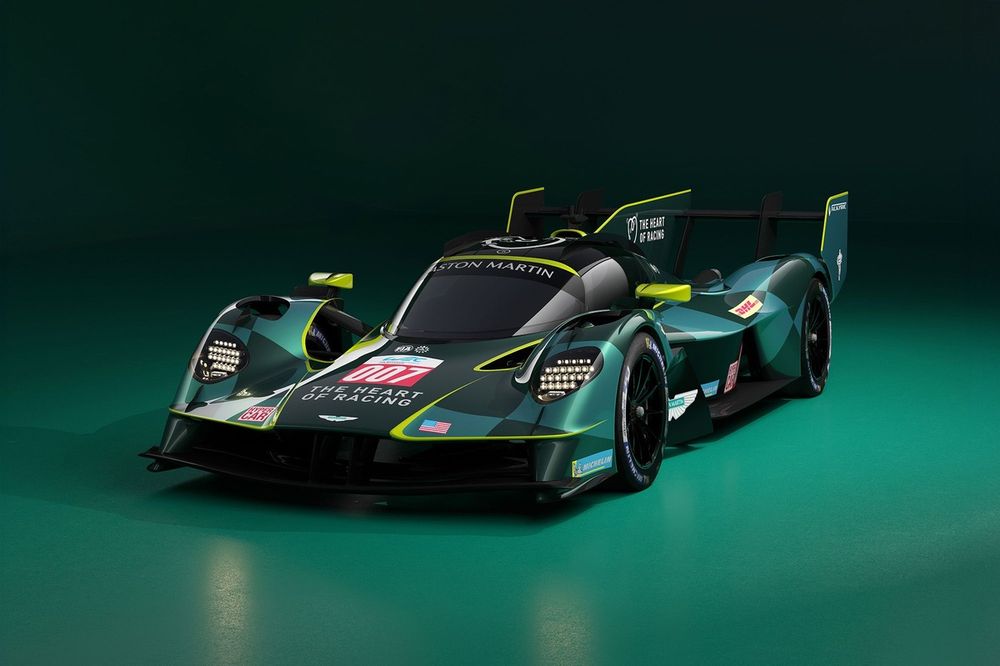
The entire body serves aerodynamic functions, with almost no styling elements that don’t contribute to performance.
The result is a claimed downforce figure exceeding the car’s own weight at high speeds. The Valkyrie’s carbon fiber structure weighs just 1,030 kg (2,271 lbs), giving it a power to weight ratio that exceeds many race cars.
The pushrod suspension features inboard mounted springs and dampers directly inspired by F1 practice – to reduce unsprung weight and improve response.
The car employs no anti-roll bars, instead relying on aerodynamic devices to control body movements another racing-derived approach.
The interior continues the no-compromise philosophy, with a reclined “feet-up” driving position reminiscent of single-seater race cars.
The detachable steering wheel houses critical controls and display information, while the minimalist dashboard contains just the essential readouts.
The doors open upward in a manner reminiscent of an LMP race car, emphasizing the Valkyrie’s competition DNA.
Limited to just 150 road cars plus 25 track-only AMR Pro versions, with prices starting around $3 million, the Valkyrie represents an almost uncompromised vision of Formula 1 engineering principles applied to a road-legal vehicle a hypercar that prioritizes pure performance over practicality at every turn.
4. McLaren Senna
Named after the legendary three-time Formula 1 World Champion Ayrton Senna, who won all his titles with McLaren, this hypercar embodies the racing team’s philosophy of relentless performance optimization.
Unlike some competitors that balance luxury with performance, the Senna makes no concessions to comfort in its single-minded pursuit of track capability an approach that mirrors the uncompromising mentality of Formula 1.
The Senna is powered by a twin-turbocharged 4.0-liter V8 engine producing 789 horsepower and 590 lb-ft of torque.
While not directly derived from an F1 power unit, the engine’s positioning and integration into the carbon fiber Monocage III chassis reflects McLaren’s racing experience.
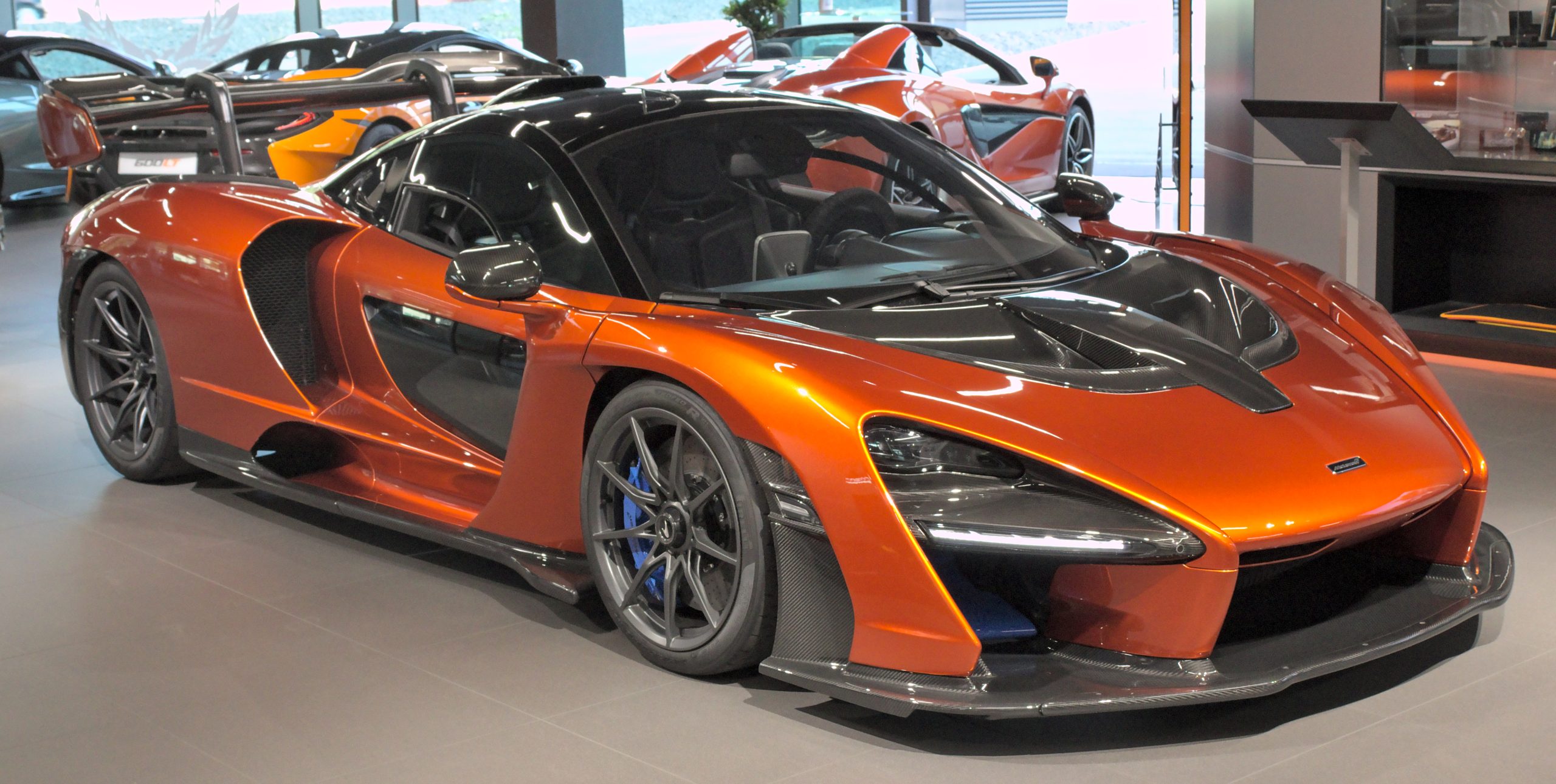
The lightweight construction results in a dry weight of just 2,641 pounds, creating an exceptional power to weight ratio that enables 0-60 mph acceleration in 2.7 seconds and a top speed of 208 mph.
Where the Senna truly embraces Formula 1 principles is in its aerodynamic design. The massive active rear wing works in concert with a double-element diffuser and active aero blades to generate up to 1,763 pounds of downforce at 155 mph.
The RCC (Race Active Chassis Control II) suspension system automatically adjusts the ride height to optimize aerodynamic efficiency in different driving scenarios technology is conceptually similar to that used in F1 before such active systems were banned from the sport.
The Senna’s distinctive appearance stems from McLaren’s “form follows function” design philosophy, with every surface, cutout, and element serving aerodynamic purposes.
The dihedral doors feature optional glass panels in their lower portions, allowing drivers to see the road surface beneath a feature inspired by the visibility requirements of open wheel racing.
The roof-mounted air intake directly feeds the engine, visually referencing the airboxes seen on Formula 1 cars.
Inside, the minimalist carbon fiber cockpit continues the racing theme with lightweight seats, exposed structural elements, and minimal sound insulation.
The steering wheel remains free of buttons and switches, focusing purely on the driving experience rather than secondary controls.
The Senna even features a glass panel in the door that allows the driver to observe the contact patch of the front tire a direct nod to open wheel racing visibility.
Limited to just 500 units worldwide with a starting price of approximately $1 million, the McLaren Senna represents one of the most track-focused road-legal vehicles ever produced.
Its dedication to aerodynamic efficiency, weight reduction, and pure performance over comfort embodies the essence of Formula 1 engineering philosophy, making it a true spiritual successor to McLaren’s Grand Prix legacy.
Also Read: 12 Best Drift Cars of All Time That Provide Amazing Performance
5. Gordon Murray Automotive T.50
The Gordon Murray Automotive T.50 represents a unique Formula 1 connection through its creator rather than a specific team affiliation.
Gordon Murray designed multiple championship-winning Formula 1 cars for Brabham and McLaren during the 1970s and 1980s, including the dominant McLaren MP4/4 that won 15 out of 16 races in 1988.
The T.50 embodies Murray’s racing philosophy and incorporates numerous F1-derived concepts in a road car package.
At the heart of the T.50 lies a naturally aspirated 3.9-liter V12 engine developed by Cosworth, revving to an astounding 12,100 rpm higher than many modern Formula 1 cars and reminiscent of the V12 era in Grand Prix racing.
Producing 654 horsepower and weighing just 392 pounds, this engine achieves a power to weight ratio unmatched in road car applications.
The six-speed manual transmission a rarity in modern hypercars connects the driver directly to the powertrain in a manner that recalls the more analog era of Formula 1 that Murray helped define.
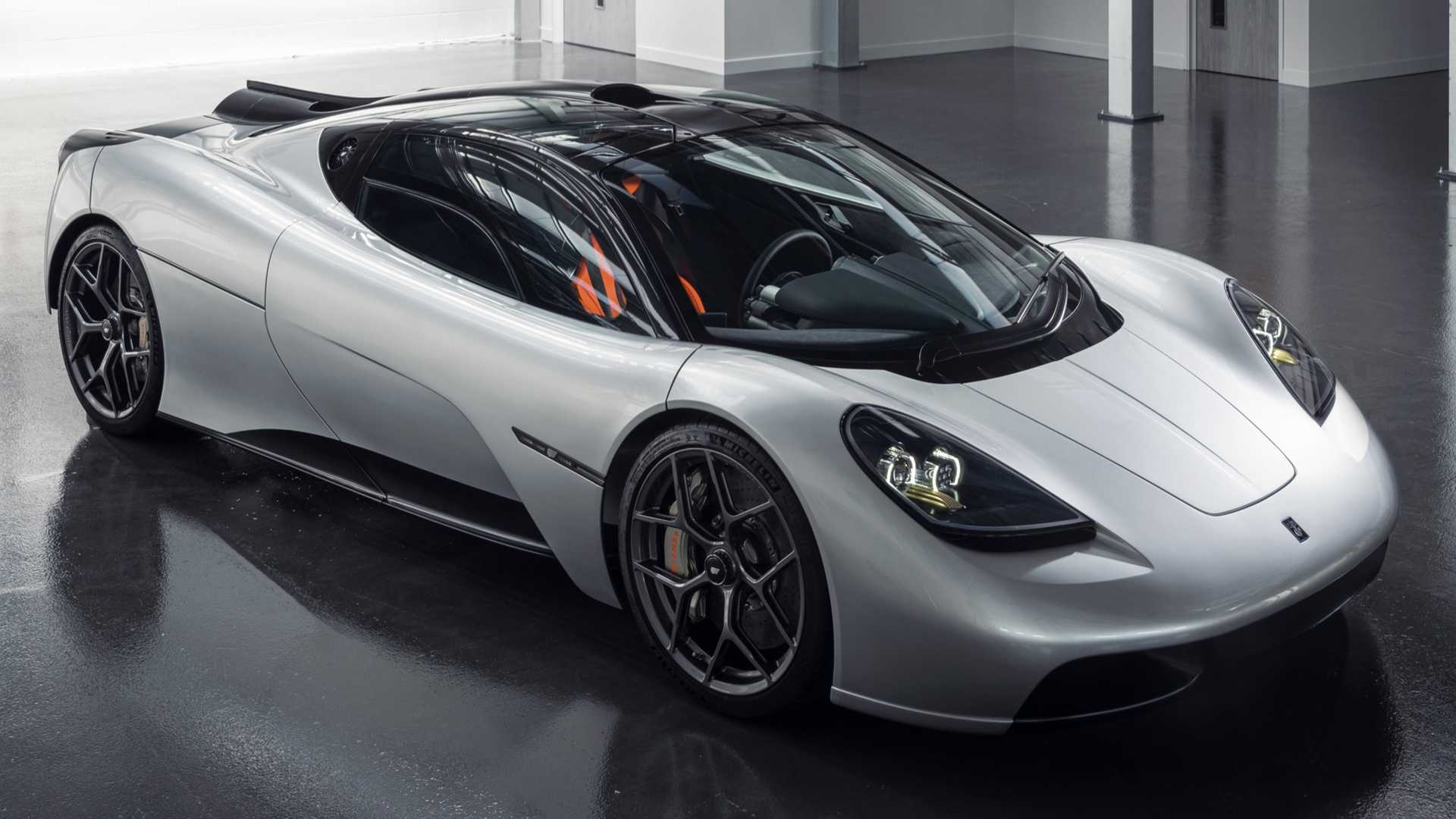
The T.50’s most distinctive Formula 1-inspired feature is its 400mm rear-mounted fan.
This active aerodynamic device directly evolved from Murray’s Brabham BT46B “Fan Car” that competed briefly in the 1978 Formula 1 season before being withdrawn due to its overwhelming advantage.
The fan accelerates air passing under the car, creating a ground effect that literally sucks the vehicle to the road surface while simultaneously reducing drag an ingenious implementation of a concept banned in F1 over four decades ago.
The carbon fiber monocoque chassis and body panels contribute to the T.50’s astonishingly low weight of just 2,174 pounds hundreds of pounds lighter than its closest competitors.
This obsession with weight reduction mirrors Formula 1 practice, where every gram is scrutinized.
The central driving position, flanked by two passenger seats, directly recalls Murray’s McLaren F1 road car while providing the symmetrical seating position familiar to single-seater race car drivers.
The T.50’s suspension system employs double wishbones all around with no anti-roll bars a configuration that reflects Murray’s experience in optimizing Formula 1 handling characteristics.
The car’s dimensions were carefully controlled to keep it compact and agile, with a footprint smaller than many sports cars despite its three-seat configuration.
The steering lacks power assistance, maintaining the direct feedback critical to racing applications.
Limited to just 100 examples with a price tag of approximately $2.6 million, the T.50 represents Gordon Murray’s vision of a Formula 1-inspired driver’s car for the road.
Rather than chasing outright performance figures, the T.50 focuses on driver engagement and the application of racing principles to enhance the driving experience a more philosophical interpretation of Formula 1’s influence on road car design.
6. Ferrari LaFerrari
The Ferrari LaFerrari represents the culmination of Ferrari’s Formula 1 technology transfer program, incorporating numerous innovations developed through the company’s racing efforts.
As Ferrari’s first production hybrid hypercar, the LaFerrari implemented energy recovery concepts that paralleled the hybrid systems then introduced in Formula 1, establishing a direct technological link between Ferrari’s race and road cars.
At the core of the LaFerrari sits a naturally aspirated 6.3-liter V12 engine producing 789 horsepower, complemented by a 161-horsepower electric motor for a combined output of 950 horsepower.
The HY-KERS (Hybrid Kinetic Energy Recovery System) was developed directly from Ferrari’s Formula 1 program, capturing energy during braking and storing it in lithium-ion batteries for deployment under acceleration.
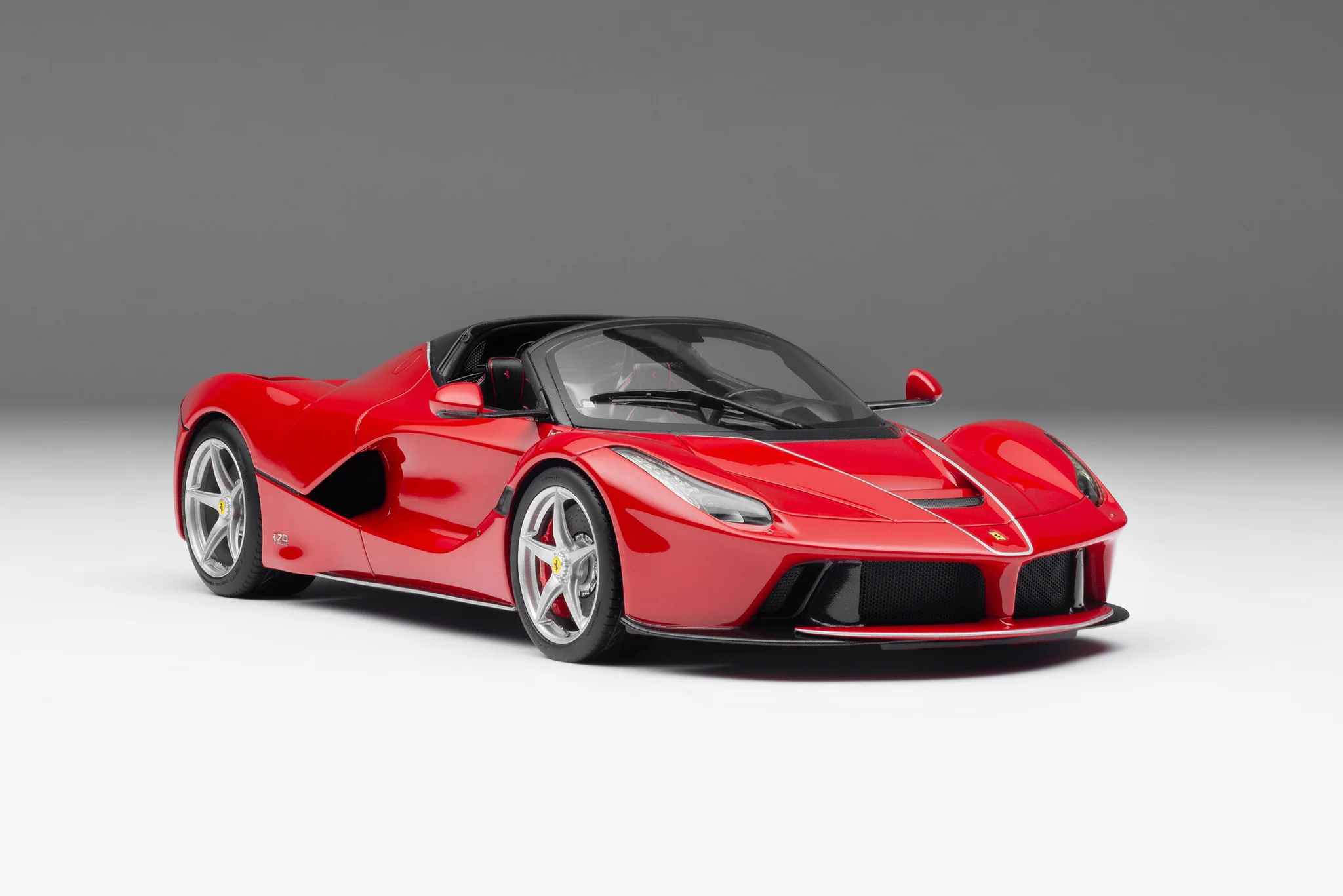
Unlike typical hybrid systems focused on efficiency, the LaFerrari’s hybrid components serve purely performance functions just as they do in F1.
The carbon fiber monocoque chassis was developed by Ferrari’s F1 technical partner Scuderia Ferrari, with input from former Ferrari F1 driver Felipe Massa during development.
The tub weighs just 70 kg (154 lbs) while providing exceptional structural rigidity.
The car’s aerodynamics were developed using Ferrari’s F1 wind tunnel facilities, with active elements including front and rear diffusers and an active rear spoiler that deploys automatically at speed to generate downforce.
The LaFerrari’s controls and driver interface reflect Ferrari’s racing philosophy. The steering wheel contains the manettino switch familiar from Ferrari’s F1-inspired control systems, allowing the driver to adjust vehicle dynamics among five settings.
The seating position places the driver low in the chassis with legs raised not as extreme as an F1 car but influenced by racing ergonomics.
The pedal box and steering column are adjustable to accommodate the fixed seat position, another racing-derived feature.
Ferrari’s Formula 1 involvement influenced even the manufacturing process, with carbon fiber components produced in the same department that creates parts for the F1 team.
The magnetorheological dampers and electronic systems benefit from racing development, while the Brembo carbon-ceramic brakes provide stopping power reminiscent of competition vehicles.
Limited to just 499 examples of the coupe (plus 210 Aperta convertibles added later) with a price approaching $1.5 million, the LaFerrari represents Ferrari’s philosophy of applying Formula 1 technology to road cars in a manner that enhances performance while maintaining usability.
While not as extreme as some competitors, the LaFerrari delivers a driving experience that captures the essence of Ferrari’s racing heritage in a more refined package.
7. McLaren P1
The McLaren P1 stands as a technological showcase of Formula 1-derived systems adapted for road use, created by a company with one of the most successful histories in Grand Prix racing.
As part of McLaren’s Ultimate Series, the P1 implemented numerous innovations developed through the company’s extensive F1 experience, packaged in a road-legal hypercar that pushed the boundaries of performance.
Power comes from a hybrid system combining a twin-turbocharged 3.8-liter V8 engine with an electric motor for a total output of 903 horsepower.
The IPAS (Instant Power Assist System) provides an electric boost on demand, conceptually similar to the energy deployment systems used in Formula 1.
The car can also operate in pure electric mode for limited distances a capability not shared with F1 cars but derived from the same hybrid technology philosophy.
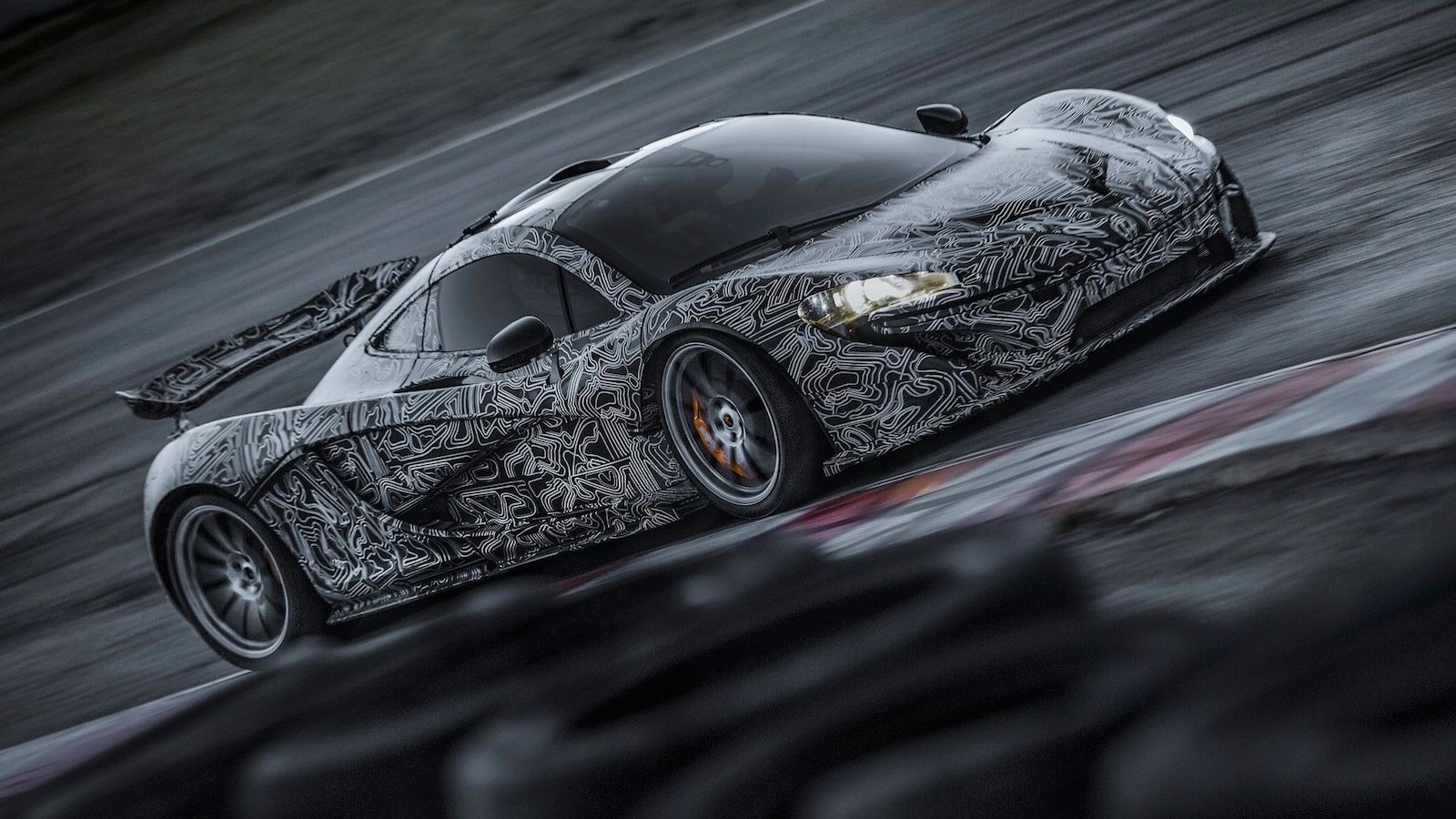
The P1’s MonoCage carbon fiber structure draws directly from McLaren’s racing experience, weighing just 90 kg (198 lbs) while providing exceptional torsional rigidity.
The aerodynamic package generates up to 600 kg (1,323 lbs) of downforce at high speeds through a combination of fixed and active elements, including a deployable rear wing that extends by up to 300mm and adjusts its angle automatically based on driving conditions technology conceptually derived from the active aerodynamics pioneered in F1 before being banned.
Perhaps the most Formula 1-inspired element of the P1 is its RCC (Race Active Chassis Control) suspension system.
This hydro-pneumatic, interconnected suspension can lower the car by 50mm in Race mode, dramatically altering its aerodynamic profile and center of gravity.
The system also provides variable spring rates and damping characteristics, allowing the P1 to transition from comfortable road car to track-focused machine at the press of a button a level of adaptability reminiscent of the active suspension systems briefly used in Formula 1 in the early 1990s.
The P1’s braking system further demonstrates Formula 1 influence, with specially developed carbon-ceramic discs coated in silicon carbide providing fade-resistant stopping power.
The brake energy recuperation system captures kinetic energy during deceleration to recharge the batteries directly paralleling F1’s energy recovery systems.
McLaren’s Brake Steer technology, originally developed for Formula 1 before being banned, helps rotate the car into corners by braking the inside rear wheel.
Limited to 375 examples worldwide with a price tag of approximately $1.15 million, the McLaren P1 represents a comprehensive application of Formula 1 principles to road car design.
While some competitors may incorporate more direct F1 components, the P1’s systems-level approach to integrating racing-derived technology created a harmonious package that delivers exceptional performance while maintaining usability a balance McLaren has continuously refined through its racing experience.
8. Alfa Romeo 4C
The Alfa Romeo 4C offers Formula 1-inspired design and engineering at a more accessible price point than the hypercars on this list.
While lacking the outright performance of its more expensive rivals, the 4C incorporates numerous race-derived principles that provide a driving experience reminiscent of open-wheel racing cars, made particularly relevant by Alfa Romeo’s historic and renewed involvement in Formula 1.
At the heart of the 4C’s F1 connection lies its carbon fiber monocoque chassis technology pioneered in Formula 1 and rarely found in cars at the 4C’s price point.
This lightweight structure provides exceptional rigidity while keeping weight to a minimum, with the entire car weighing less than 2,500 pounds.
The mid-engine layout, with the 1.7-liter turbocharged four-cylinder positioned directly behind the cockpit, mirrors the weight distribution philosophy of racing cars.
The 4C’s unassisted steering represents another Formula 1-inspired choice, providing unfiltered feedback through the wheel in a manner reminiscent of race cars.
The absence of power steering saves weight and maintains the direct connection between the driver and the road surface that characterizes pure racing machines.
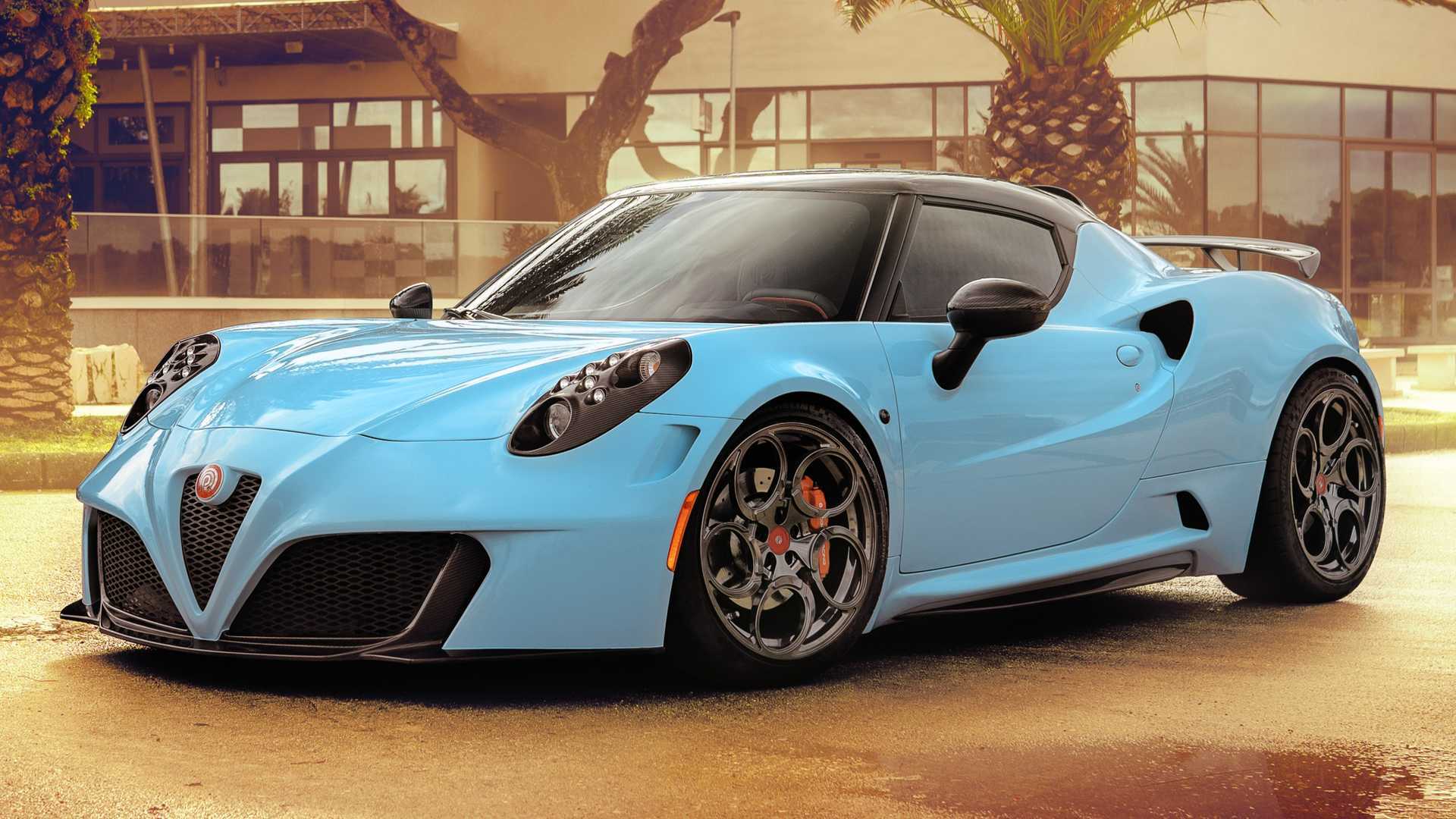
The steering ratio is quick and precise, requiring minimal input for directional change another racing-derived characteristic.
Aerodynamics shaped the 4C’s distinctive appearance, with its curves and surfaces designed to manage airflow around the vehicle.
While lacking the active aerodynamic elements of more expensive cars, the fixed aerodynamic package still generates meaningful downforce at speed.
The exposed carbon fiber structure visible in the cabin further emphasizes the car’s racing heritage and lightweight philosophy.
The minimalist interior continues the racing theme, with exposed structural elements, lightweight seats, and basic controls focused on the driving experience rather than luxury amenities.
The digital instrument cluster provides essential information, while secondary systems are kept to a minimum to reduce complexity and weight an approach that parallels the focused environment of a racing cockpit.
With a base price starting under $70,000 during its production run (2013-2020), the Alfa Romeo 4C represented one of the most affordable ways to experience carbon fiber construction and mid-engine handling in a package influenced by Formula 1 design principles.
While its 237-horsepower output and performance figures (0-60 mph in 4.1 seconds) can’t match the hypercars on this list, the 4C’s lightweight construction and pure driving experience capture the essence of Formula 1’s driver-focused philosophy at a fraction of the cost.
9. Ferrari F8 Tributo
The Ferrari F8 Tributo continues Ferrari’s tradition of transferring Formula 1 technology and design philosophy to production vehicles.
While not a limited-production hypercar like some entries on this list, the F8 Tributo incorporates numerous elements derived from Ferrari’s racing program, offering a more accessible entry point into Ferrari’s F1-inspired engineering.
The heart of the F8 Tributo is its twin-turbocharged 3.9-liter V8 engine, producing 710 horsepower and 568 lb-ft of torque.
This powerplant benefits directly from Ferrari’s racing experience, featuring a lightweight flat-plane crankshaft design reminiscent of racing engines and a reduced rotational inertia that improves response time a characteristic crucial in Formula 1 power units.
The engine’s specific output of 182 horsepower per liter demonstrates Ferrari’s expertise in extracting maximum performance from relatively small displacement another racing-derived principle.
Aerodynamic development for the F8 Tributo utilized computational fluid dynamics and wind tunnel technology from Ferrari’s Formula 1 program.

The S-Duct at the front of the vehicle channels air through the hood to generate downforce over the front axle a concept directly adapted from Ferrari’s F1 cars.
The redesigned underbody generates a significant ground effect, while the rear diffuser and spoiler work together to manage airflow and increase high-speed stability.
The F8’s dynamic control systems incorporate Ferrari’s Side Slip Control 6.1 and Ferrari Dynamic Enhancer Plus, electronic aids that allow drivers to explore the car’s limits with greater confidence.
These systems represent a road-car adaptation of the sophisticated electronic controls that help Formula 1 drivers extract maximum performance.
The manettino switch on the steering wheel a direct reference to Ferrari’s F1 controls allows drivers to select different vehicle modes that alter throttle response, traction control intervention, and suspension settings.
With a base price of approximately $275,000, the F8 Tributo offers a more attainable entry point into Ferrari’s Formula 1-inspired engineering than limited-production models like the LaFerrari.
Its balance of everyday usability with genuine performance capabilities demonstrates how F1 technology can enhance the driving experience in a production vehicle context, making it an excellent example of how racing innovations benefit road car development.
10. Lotus Evija
The Lotus Evija represents a dramatic reimagining of Formula 1 principles applied to an all-electric hypercar.
Drawing on Lotus’s extensive motorsport heritage, including its successful history as a Formula 1 constructor, the Evija incorporates numerous racing-derived design elements while pointing toward the future of performance motoring.
As Lotus’s first fully electric vehicle, the Evija doesn’t feature a conventional F1-style internal combustion engine.
Instead, it reinterprets Formula 1’s focus on power density and energy management through its electric powertrain.
Four independent electric motors produce a combined output of 1,973 horsepower, delivering a performance that exceeds even the most powerful F1 cars: 0-60 mph in under 3 seconds and a top speed exceeding 200 mph.
The mid-mounted battery pack mirrors the central mass positioning of a mid-engine race car, maintaining optimal weight distribution.
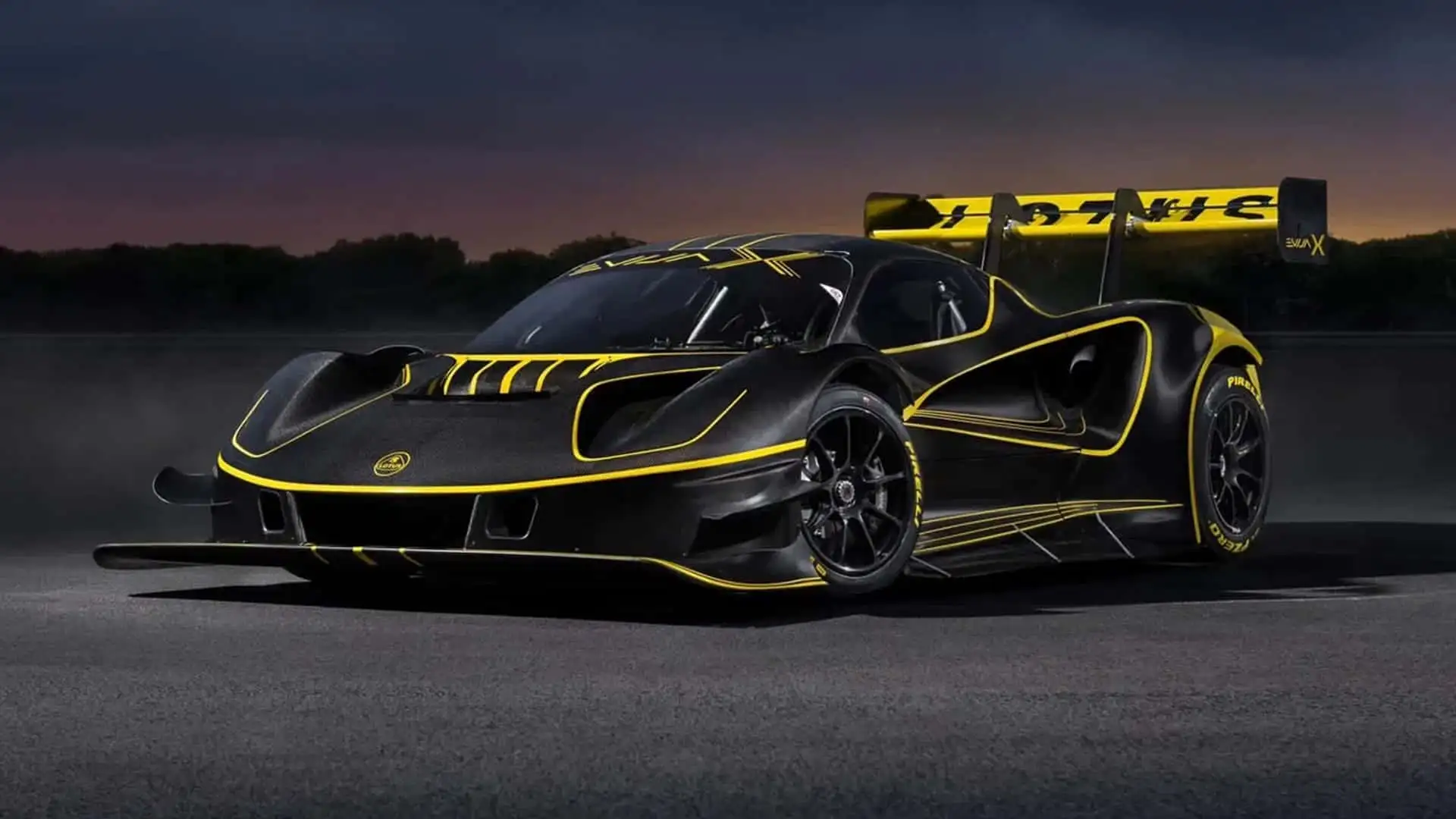
The Evija’s most striking Formula 1 connection lies in its aerodynamic design. The car features Venturi tunnels that run through the rear quarters a dramatic visual element that references ground effect aerodynamics pioneered in Formula 1.
These tunnels direct air through the body structure rather than around it, dramatically reducing drag while generating downforce.
The active rear wing deploys automatically at high speeds, working in concert with the diffuser to manage airflow in a manner reminiscent of an F1 car’s DRS (Drag Reduction System).
The carbon fiber monocoque chassis weighs just 129 kg (284 lbs) and was developed using technology from Lotus’s motorsport division.
The pushrod suspension with in-board, adjustable dampers directly references Formula 1 practice, keeping unsprung weight to a minimum while providing precise control over wheel movement.
The AP Racing carbon-ceramic brakes offer fade-resistant stopping power similar to competition vehicles.
Limited to just 130 examples worldwide with a price tag of approximately $2.3 million, the Lotus Evija represents a forward-looking interpretation of Formula 1 principles.
Rather than directly adapting current F1 technology, the Evija reimagines how racing philosophy can inform electric vehicle design, creating a hypercar that honors Lotus’s motorsport heritage while pointing toward a new era of performance.

